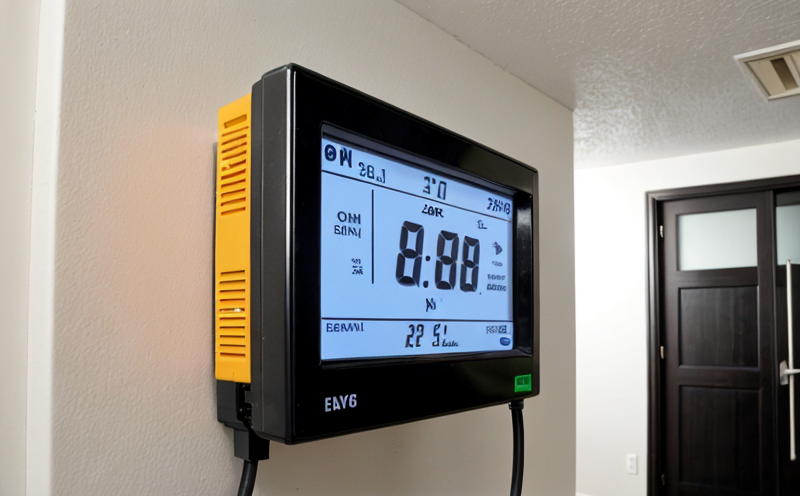ISO 8990 Heat Transfer Efficiency Testing in Buildings
The ISO 8990 standard is a crucial tool for ensuring heat transfer efficiency in buildings, which is essential for reducing energy consumption and improving the overall environmental impact of construction. This service focuses on providing comprehensive testing to evaluate thermal performance according to this international standard.
Heat transfer efficiency plays a pivotal role in determining how effectively a building retains or dissipates heat, thereby influencing its energy consumption levels directly. By adhering to ISO 8990 guidelines, architects and engineers can design more sustainable buildings that optimize resource use while maintaining occupant comfort. This service helps organizations meet regulatory requirements and enhance their reputation for environmental responsibility.
The testing process involves analyzing various aspects of a building's envelope, including walls, roofs, floors, doors, windows, and skylights. The aim is to quantify the heat transfer coefficient (U-value) between indoor and outdoor environments under controlled conditions. Understanding these values allows stakeholders to make informed decisions about insulation materials, glazing types, and other construction elements.
One of the key benefits of ISO 8990 testing lies in its ability to identify areas where improvements can be made without compromising structural integrity or aesthetic appeal. For instance, by pinpointing sections with higher than average U-values, architects have opportunities to redesign those parts using more efficient materials and techniques.
Moreover, this service extends beyond mere compliance; it offers valuable insights into long-term cost savings associated with improved thermal performance. As energy costs continue to rise globally, businesses operating within the energy sector find significant value in implementing strategies aimed at minimizing heating/cooling loads throughout their facilities.
Scope and Methodology
| Parameter | Description |
|---|---|
| Thermal Resistance (R-value) | The resistance of a building element to heat flow, measured in m²K/W. Higher values indicate better insulation. |
| Heat Transfer Coefficient (U-value) | The inverse of the total thermal resistance when considering both sides of the wall, expressed in W/m²K. Lower U-values represent more efficient insulations. |
| Surface Temperature Differences | Differences between interior and exterior temperatures on various surfaces within a building envelope. |
The methodology employed for ISO 8990 testing includes several steps:
- Preparation of the specimen, ensuring it represents typical installation conditions as closely as possible.
- Setting up the test setup to simulate real-world scenarios accurately.
- Application of standardized procedures for measuring heat flow rates and other relevant parameters.
- Data analysis using statistical methods to ensure accuracy and reliability.
- Generating detailed reports summarizing findings and recommendations for improvement.
Throughout this process, strict adherence to ISO 8990 standards guarantees consistent results across different facilities. This ensures that any discrepancies observed are due solely to variations in building design rather than measurement errors or inconsistencies.
Quality and Reliability Assurance
- Use of calibrated instruments for precise measurements.
- Inclusion of quality control checks at multiple stages of the testing process.
- Regular calibration of equipment against traceable standards.
- Training of personnel on latest techniques and best practices.
The reliability of ISO 8990 heat transfer efficiency tests is further enhanced by our stringent quality assurance measures. These include:
- Independent validation of all calculations and interpretations.
- Ongoing review and refinement of test protocols based on feedback from clients.
- Participation in proficiency testing programs to maintain high standards.
We pride ourselves on delivering accurate, reliable results that provide confidence both internally and externally. Our commitment to excellence ensures that our clients can trust the outcomes provided by this service.
Environmental and Sustainability Contributions
- Reduction in greenhouse gas emissions through optimized energy use.
- Promotion of sustainable design principles through informed decision-making processes.
- Support for global efforts towards climate change mitigation goals.
The implementation of ISO 8990 heat transfer efficiency testing contributes positively to environmental sustainability by:
- Fostering the development and adoption of greener building materials and technologies.
- Educating stakeholders about best practices for minimizing energy consumption.
- Encouraging continuous improvement in design and construction standards worldwide.
Beyond immediate benefits, this service plays a vital role in fostering a culture of sustainability within industries involved with energy production and distribution. By integrating sustainable practices early on in the planning stages, organizations contribute to broader environmental goals while also enhancing their own operational efficiency.





